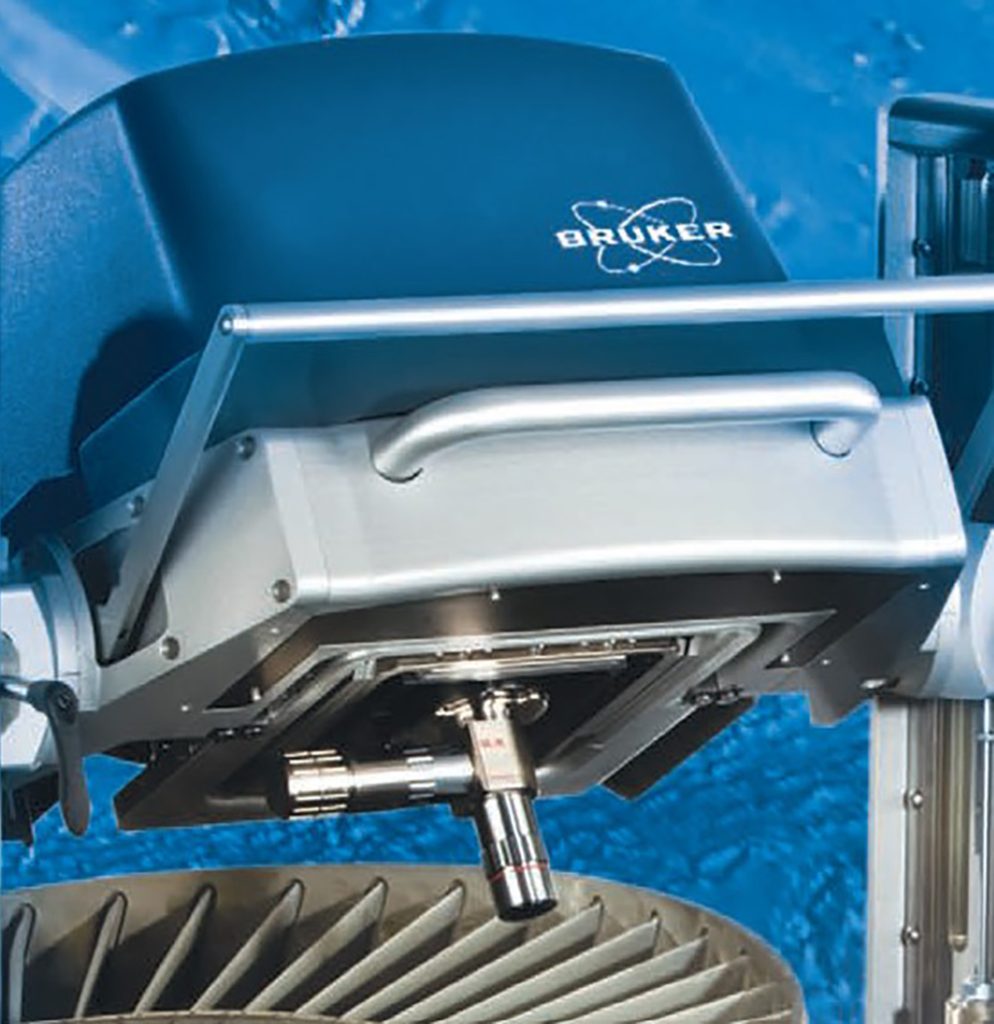Though an optical profiler and stylus measurement system are very different technologies, they do also have some similarities.
If you are used to working with stylus-based measurement systems, you know that the length of the dataset is determined by the evaluation length, while the size of the stylus tip is related to the smallest features that can be resolved.
A 3D optical profiler has similar physical characteristics that determine size and resolution. Many of these are determined by the microscope objective. As with standard microscope objectives, interferometric objectives can provide larger or smaller magnification, typically ranging from 2X to 50X. A higher magnification objective provides higher lateral resolution over a smaller field-of-view, and vice versa.

A 3D optical profiler with a long working distance objective (Courtesy of Bruker)
Choosing the best objectives to purchase will depend largely upon the types of features and components that will be measured. There are a number of tradeoffs to consider as well.
Since an optical profiler will typically be used for a range of measurements, most profilers allow the objective to be switched out for different measurement requirements. Some systems include a turret that lets the operator switch between objectives on-the-fly. A user may, for example, use a low-resolution objective to locate a feature within a larger surface, then switch to a higher resolution to measure the feature of interest.
When high resolution and a large field of view are both required, it is possible to stitch together a number of high-resolution images into a single measurement that covers the larger area. Stitched measurements require more time to acquire and analyze, however, and stitched measurements can result in very large data files that require considerable time to analyze.
Another primary characteristic of objectives is the Numerical Aperture (NA) of an objective. NA is a measure of the objective’s ability to collect light, similar to how the “F-number” measures the light-gathering ability of a camera lens.
The NA of the objective contributes to the lateral resolution of the system—its ability to discern adjacent features. In general, an objective with a higher NA will have higher lateral (spatial) resolution as well. The vertical/height resolution depends on the type of measurement system (optical profiler vs confocal vs focus variation, etc.). An optical profiler (interferometer) is the only measurement system in which the height resolution is not dependent on the NA.
One more critical characteristic of an objective is its working distance, which is the space between the objective and the sample surface. A long working distance objective may be required to measure features on a complex part or in a difficult-to-reach location. The NA, and thus the spatial resolution, of long working distance objectives may be lower than a standard objective, however.
It is possible to obtain objectives that provide a combination of high resolution, large field-of-view, and/or long working distance. These objectives, however, introduce one final tradeoff: price. A high NA version of an objective may cost many times as much as a more widely available version.
In short, a number of tradeoffs need to be made when selecting an objective for a particular application. The choice is driven by the size and location of the feature(s), the resolution required to image them sufficiently, the required measurement speed, and price, among other considerations. Most optical profiler manufacturers include charts that help you select between their standard objectives, and their sales or support teams can typically guide you when a unique set of characteristics is required.
To learn more about lateral resolution, field-of-view, and NA, check out the Filtering module from our Surface Texture and Tribology short course, available on udemy.com.
You may also want to learn more about our in-person and online classes to take a deeper dive into surface texture analysis.
